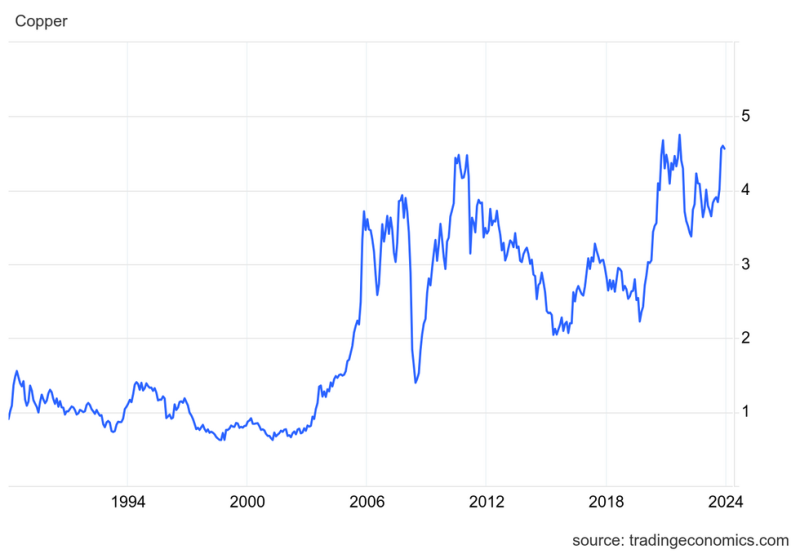
Copper Chronicles: Unveiling the Latest Historical Price Trends (2024 Update)
Historical Copper Prices (Updated 2024): Analyzing Trends and Impacts
Overview of Copper Prices:
Copper has long been a critical commodity in industries such as construction, electronics, and manufacturing. Its versatile properties make it an essential material for a wide range of applications. The price of copper is influenced by various factors, including supply and demand dynamics, global economic conditions, geopolitical events, and market speculation. Tracking historical copper prices provides valuable insights into past trends and can help forecast potential future developments in the market.
Historical Trends in Copper Prices:
Over the years, copper prices have exhibited significant volatility, responding to changing market conditions and macroeconomic factors. Looking back at the historical data, we can identify key trends that have shaped the copper market:
1. Boom and Bust Cycles: The copper market is often characterized by boom and bust cycles, with prices experiencing sharp fluctuations in response to shifts in supply and demand. These cycles are influenced by factors such as global economic growth, infrastructure spending, and inventory levels.
2. Supply Disruptions: Copper prices can be highly sensitive to supply disruptions, whether due to labor strikes, natural disasters, or geopolitical tensions. Such disruptions can lead to sudden spikes in prices as market participants react to potential shortages.
3. Economic Indicators: Copper prices are closely monitored as a barometer of economic health, given its widespread use in various industries. Increases in copper prices are often interpreted as a sign of strong demand and growth prospects, while declines may signal economic slowdowns.
4. Chinese Demand: As the world’s largest consumer of copper, China plays a crucial role in driving global demand and prices. Economic developments in China, such as infrastructure projects and manufacturing activity, can have a significant impact on copper prices.
Implications for Industry and Investment:
The fluctuating nature of copper prices poses challenges and opportunities for both industry players and investors. Companies reliant on copper as a raw material need to manage price risks effectively through strategies such as hedging or diversification. For investors, copper prices can offer opportunities for speculation or long-term investment, depending on market conditions and their risk tolerance.
Moreover, the sustainability and ethical sourcing of copper have become increasingly important considerations for industry stakeholders and consumers. Ethical mining practices, environmental concerns, and social responsibility are factors that can influence market perceptions and price trends in the long run.
Looking Ahead:
As we move into 2024, keeping a close eye on historical copper prices and current market developments will be essential for participants in the copper market. Anticipating future price trends requires a thorough understanding of the multifaceted factors influencing copper prices, from supply chain disruptions to global trade dynamics. By staying informed and agile in response to market changes, stakeholders can navigate the complexities of the copper market and make informed decisions.
In conclusion, historical copper prices offer valuable insights into the dynamics of the market and can inform strategic decisions for industry players and investors. By analyzing past trends and understanding the factors driving price movements, stakeholders can position themselves effectively in a constantly evolving copper market landscape.